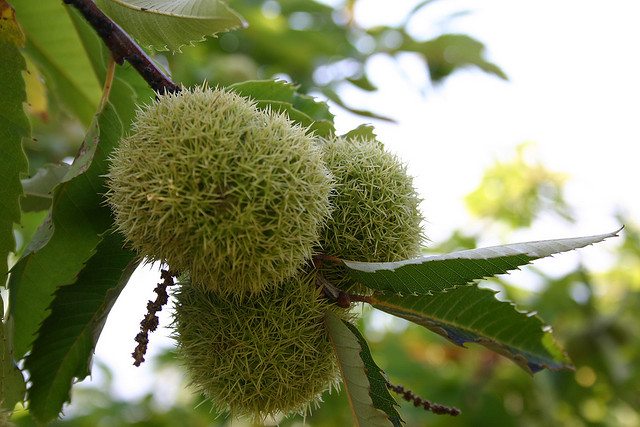Chestnuts played an important role in human and wildlife health for thousands of years. Archeologists discovered chestnuts in eastern MI from 3000-1000 BC. The sweet flavor of these nuts is enjoyed by humans as a delicious kind of food which can be used in many recipes.
In Albania, chestnuts trees (Castanea sativa Mill) are widely spread in the northern regions of Tropoja, Kukes, Diber, Puke, Burrel, Lezhe, ect. Tropoja city is known for its “Greater Massifs of Chestnuts in Balkans”. This massif has a surface of 2000 hectares, at an altitude 300-1300 m from sea level and has about 200 thousand chestnuts groves. The massif is located in the regions of Nikaj-Mertur, Bujan, Fierze and Markaj.
Chestnuts get exported annually in Italy, Germany, Austria and Turkey. They are used not only in food industry but also in pharmaceutics, cosmetics, ect. Chestnuts obtain Vitamin K which is of a great value in pharmaceutics field, but not only. This helps locals to increase their incomes and also helps the economic development of the region.
As lack of a specific company in the region, chestnuts get collected by locals traditionally by hand or with other simple tools. Chestnuts leafs are collected at the time of flowering whereas the seeds are collected at the time of the maturity, mostly in October-November period.
The chestnuts market is guaranteed every year since the demands of external markets for these original and bio products are at high rates. Their price per kg varies from 120 ALL to 150 ALL, a very low price for the important values of this product.
Photo credits: NuriXH / Flickr

Leave a Reply
You must be logged in to post a comment.